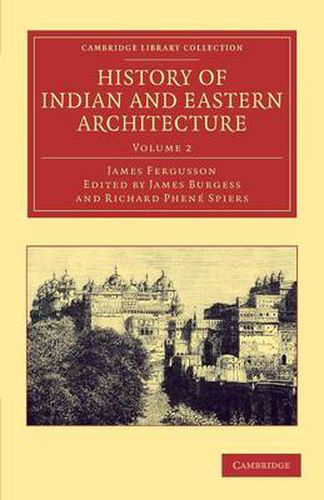Readings Newsletter
Become a Readings Member to make your shopping experience even easier.
Sign in or sign up for free!
You’re not far away from qualifying for FREE standard shipping within Australia
You’ve qualified for FREE standard shipping within Australia
The cart is loading…






Born in Scotland, James Fergusson (1808-86) spent ten years as an indigo planter in India before embarking upon a second career as an architectural historian. Although he had no formal training, he became one of the most respected researchers in the field and an expert on India’s cave temples. His History of Indian and Eastern Architecture was first published in 1876 and became a standard work. It was revised in this two-volume edition of 1910 by James Burgess (1832-1916), former Director of the Archaeological Survey of India, and Richard Spiers (1838-1916), a noted architect and historian of architecture. Volume 2 covers Jain and Indo-Aryan architecture, Islamic architecture in India, and the buildings of Burma, Cambodia, Thailand and Java. The final chapter looks at Chinese and Japanese temples. Illustrated with nearly 300 maps, plans and drawings, this work of impressive scope remains relevant to students of Indian and Asian architecture and history.
$9.00 standard shipping within Australia
FREE standard shipping within Australia for orders over $100.00
Express & International shipping calculated at checkout
Born in Scotland, James Fergusson (1808-86) spent ten years as an indigo planter in India before embarking upon a second career as an architectural historian. Although he had no formal training, he became one of the most respected researchers in the field and an expert on India’s cave temples. His History of Indian and Eastern Architecture was first published in 1876 and became a standard work. It was revised in this two-volume edition of 1910 by James Burgess (1832-1916), former Director of the Archaeological Survey of India, and Richard Spiers (1838-1916), a noted architect and historian of architecture. Volume 2 covers Jain and Indo-Aryan architecture, Islamic architecture in India, and the buildings of Burma, Cambodia, Thailand and Java. The final chapter looks at Chinese and Japanese temples. Illustrated with nearly 300 maps, plans and drawings, this work of impressive scope remains relevant to students of Indian and Asian architecture and history.